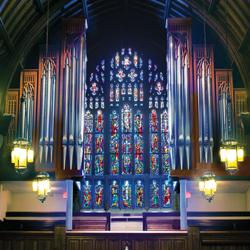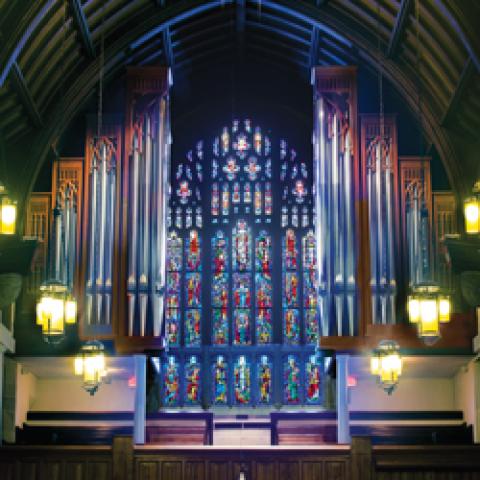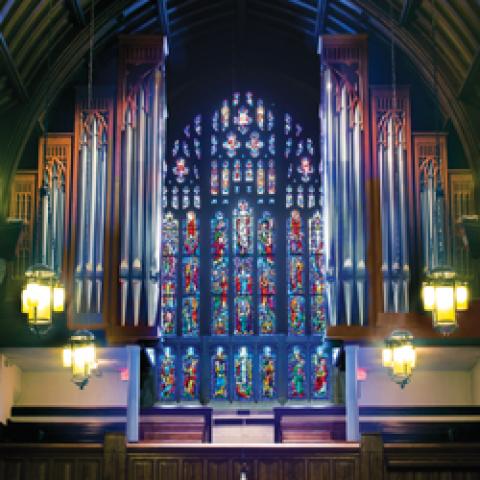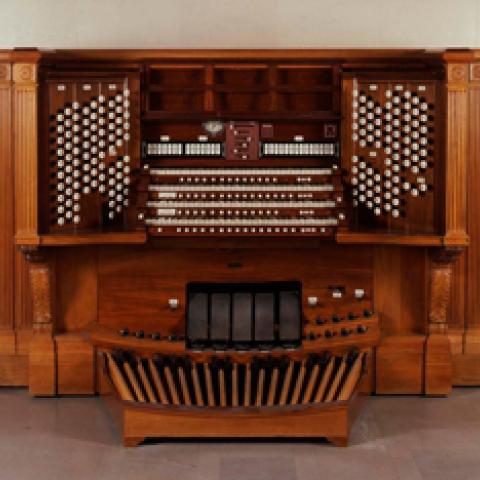Lunching with geniuses
I used to be an avid baseball fan. Starting with the “Impossible Dream,” the fabled 1967 season of the Boston Red Sox, I followed the hometown team aided and abetted by my father, who had grown up in Cincinnati following the Reds from the bleachers of Crosley Field. Dad had the same seats at Fenway Park for more than thirty years (section 26, row 4, seats 13 and 14), and he and I had an unbroken streak of twenty-five consecutive opening day games there, unbroken even when opening day coincided with Good Friday, and the priest and the organist had to make special arrangements! A big part of my adult relationship with my father happened in those seats, and though I do not follow the game anymore, I cherish the memories.
Some of my colleagues play Virtual Baseball, a well-organized game in which they build teams by drafting and trading “real” players and keeping track of their virtual teams based on the daily statistics of their players from the live major league baseball games. They track wins and losses, and if they have built good teams, play through the playoffs and World Series. It is very sophisticated and they are very devoted, and there is some wagering involved to keep things interesting.
Throughout my career, I have watched the progress of many organ companies, both domestic and foreign, and it occurs to me that we might develop an organbuilding version of Virtual Baseball. We would make up cards with photos and lists of skills of all the employees in all the workshops, document their contributions to the various organs they worked on, and build a virtual “dream team” of craftsmen. No? Perhaps not.
We follow the great names in organbuilding as avidly as the most enthusiastic baseball fan in a sports bar. We cite their great instruments, celebrate their innovations, and rattle off specifications, just like we rattled off great starting line-ups of history with our seatmates at Fenway Park. (Did Rico Petrocelli bat before or after Tony Conigliaro in the 1967 Red Sox?) We single out our organbuilding heroes, past and present, chronicling their careers and the instruments they produced.
We trace how organbuilders and organists influenced each other, and if you are anything like me, we imagine conversations between them. Gottfried Silbermann and J. S. Bach must have had lunch together a couple times, as did Aristide Cavaillé-Coll with Charles-Marie Widor, and Dirk Flentrop with
E. Power Biggs. How I would love to have been a fly on the wall, or even seated at the table for one of those meals. I have read that Bach played a couple pianofortes built by Silbermann and did not think much of them. Maybe after that the lunches were over. Cavaillé-Coll was a parishioner at Saint-Sulpice in Paris until his death in 1899, when Widor was in the middle of his tenure there and at the height of fame and creativity. Cavaillé-Coll was thirty-three years older than Widor and was largely responsible for Widor’s appointment at Saint-Sulpice. That great organ was nearly forty years old at the time of Cavaillé-Coll’s death, and they must have talked about it frequently. I bet they had a regular weekly table at their favorite bistro and were sometimes joined by friends like Charles Gounod or Camille Saint-Saëns.
Robert Clicquot and François Couperin, Henry (Father) Willis and Samuel Sebastian Wesley, Ernest Skinner and T. Tertius Noble, and Charles Fisk and Daniel Pinkham are among other lunch partners I would love to have joined.
Let’s hear it for the little guys
It may be the genius luminaries of the field that we think of first, but lurking in their shadows are thousands of talented craftsmen and musicians, without whom the history of our instrument would be incomplete. William Horatio Clark (1840–1913) is one whose work has interested me because our paths have crossed several times. He was born into a musical family in Newton, Massachusetts, and took his first regular job as a church organist at the Unitarian Church of Dedham, Massachusetts, at the age of sixteen. He subsequently was organist at the Berkeley Street Congregational Church in Boston (now the site of Morgan Memorial Collection Center on Melnea Cass Boulevard, very close to the location of the Hook workshop), and moved to the First Congregational Church of Woburn, Massachusetts, in 1861, which is where I first came across his legacy.
The First Congregational Church of Woburn was built in 1860. It is an enormous wood-frame building whose 196-foot spire is reputed to be the tallest wooden steeple in North America. The magnificent three-manual organ by
E. & G. G. Hook (Opus 283) was also built and installed in 1860, and I was fortunate to serve as assistant organist there while I was in high school. The organbuilder George Bozeman was organist there, and as I remember it from my headstrong youth, he created the position for me partly as the terrific educational experience it was, and partly so I would be there to cover for him as his organ work required him to travel. My first organbuilding experiences were summer jobs in Bozeman’s shop in 1975 and 1976, and I am grateful to him as friend and mentor.
That was one of my first cracks at leading a choir, and I was naïve enough that it never crossed my mind that conducting from an attached keydesk was supposed to be difficult. Today, as I meet with organists and organ committees who cannot conceive of such a thing, I am grateful for that early experience. And what an organ. Thirty-five ranks of Civil War era tone color, brilliant choruses of Principals, two Trumpets, an Oboe and a Clarinet, and a doozey of a Pedal Posaune with wood resonators. As a seventeen-year-old I knew it was a wonderful organ, but I had no idea how fortunate I was.1 You can see photos and specifications of the organ at https://pipeorgandatabase.org/OrganDetails.php?OrganID=8041.
The Reverend Stuart Nutter came as a new pastor during my time there, providing my first experience with conservative evangelical preaching. I was not close with members of the congregation, but I recall that members of the choir were not happy with his messages. One winter Sunday, there was a tremendous roar as a huge load of wet snow slid off the roof and fell fifty feet to the parking lot. It seemed a sign that it was Pastor Nutter’s car that was utterly flattened, such a wreck that three of the wheels were broken off.
I do not know if William H. Clarke had anything to do with the planning of that Hook organ, but it is fair to assume that he was present for at least part of the installation, where he would have met Stephen P. Kinsley, the brilliant voicer for E. & G. G. Hook. Clarke left Woburn in 1865, returned to the Berkeley Street church for a couple years, then returned to Woburn where he stayed until 1869, when he moved across Woburn Center to the Unitarian Church. It was no coincidence that E. & G. G. Hook installed their Opus 553 there the following year, also voiced by Stephen Kinsley. During my high school tenure, there were two tremendous three-manual Hook organs in my life.
I have a vivid memory of a recital played by James Busby at the Unitarian Church (currently organist at St. Stephen’s Episcopal Church in Providence, Rhode Island), joined by soprano Elisabeth Phinney. Together, they offered Bach’s Cantata 51, Jauchzet Gott in allen Landen. The organ included a Carillon (I think the knob said “Carrillons”), the first percussion stop in an American organ. It was a set of 29 metal bars struck by piano hammers, located above the top manual behind the music rack, and playable without wind using a mechanical coupler, and Busby used that distinctive voice as part of “Bach’s Orchestra.”
Mrs. Phinney taught singing at the New England Conservatory of Music for thirty-two years. Her daughter Monique, also a singer, was one of my high school pals, and her husband Keith was director of music at nearby Bedford (Massachusetts) High School. I remember several great experiences when I was accompanying Monique in various local performances, and her parents were there as coaches.
William Clarke was thirty years old when the Hook organ was installed in the Unitarian Church and had moved back and forth between jobs six times. His longest tenure was the four-year stint at the Congregational Church in Woburn. He stayed with the Unitarians and their grand forty-five-rank organ for only one year, and showed up in Dayton, Ohio, in 1871 as the superintendent of school music. In 1873 he become organist of the First Methodist Church in Erie, Pennsylvania, and in 1874 he moved to Indianapolis, Indiana, to become organist of the First Baptist Church. While he was in Indianapolis he founded Wm. H. Clarke & Co., Church Organ Builders, enticing his friend Stephen Kinsley to leave E. & G. G.
Hook to become head voicer. If I were building a virtual organ shop, I would want to have Kinsley as my voicer!
After the Unitarian church closed,
E. & G. G. Hook’s Opus 553 was dismantled by the Organ Clearing House, restored by Hermann Eule of Bautzen, Germany, and installed in 2002 in Die Kirche zum Heiligen Kreuz in Berlin. Thomas Murray played the dedication recital. It is known as Die Berliner Hook-Orgel and is highly regarded in its unique situation as a nineteenth-century American organ in a German church.
Wm. H. Clarke & Company built fifteen organs that we know of, two of which have been part of my life. My parents purchased a little house in Yarmouthport, Massachusetts (on Cape Cod), in 1968 where we spent summers, and where they moved after my father’s retirement. There are two historic organs in Yarmouthport, but it was at the Swedenborgian Church where I served as organist for the summer-only congregation. The organ had been built by Wm. H. Clarke & Co. in 1872, then rebuilt and modified by the Andover Organ Company in 1960. You can see “before and after” stoplists at https://pipeorgandatabase.org/OrganDetails.php?OrganID=8978, a study of sign-of-the-times organ renovation.
Clayton Priestnal was pastor of the small congregation (he served a parish in Philadelphia during the winter) who was the epitome of Central Casting’s version of a rickety country minister. He was a slight man with the shaggiest eyebrows I had ever seen, who had a way of bouncing up and down on the balls of his feet for emphasis as he was preaching. He had established a relationship with the Highfield Theater of Falmouth, Massachusetts, a summer theater company that specialized in productions of Gilbert & Sullivan operettas. Cast members were conservatory voice majors from across the country, and a different singer came to Yarmouthport each Sunday to participate in the service, another great educational opportunity for a young organist. It was after my last summer on Cape Cod that I went to Oberlin, where I was reunited with several of the singers I had worked with in Yarmouthport.
The Wm. H. Clarke/Andover organ was a simple and small instrument, but it was lovely, and I loved playing on it. It was about two miles from home, and I did all that walking in bare feet, a memory that sends lightning bolts up and down my legs today. I played recitals each summer, and I know that instrument was an important part of my early education. In 2002, after I had joined the Organ Clearing House, I was invited to play another recital, the first of many lecture-recitals I developed. My topic was roughly the history of the nineteenth-century American organ, with special attention given to William Horatio Clarke. I was fortunate to learn that the Indiana Historical Society had considerable material about Clarke’s life, family, and work, which is the source of the biographical information I am sharing here.
As a student at Oberlin, I worked part-time and summers for Jan G. P. Leek, the ebullient organbuilder who was the school’s full-time organ and harpsichord technician until he left to start his own firm during my junior year. He was a first-generation immigrant, who apprenticed in the Netherlands as a child and came to Cleveland to work for Walter Holtkamp, Sr. He was a great teacher and a lot of fun, and I stayed in his shop for four years after I graduated in 1978. It was from him that I learned the fundamentals of organbuilding and woodworking, tuning, and troubleshooting.
One of the projects we did together was the restoration of another organ by Wm. H. Clarke & Co. This one in Sacred Heart of Jesus Catholic Church in Bethlehem, Ohio, a commanding stone Gothic building with a tall spire that was visible from many miles away across rolling farmland. The church’s organist was a high school student from a farming family with thirteen kids, who had the presence of mind to organize the parish to fund the restoration of the organ. The project was guided by his dream that the organ should be “plaqued” by the Organ Historical Society, and we completed the work in 1980. You can see the specification of the organ at https://pipeorgandatabase.org/OrganDetails.php?OrganID=4256.
Garth Peacock of the Oberlin organ faculty played the dedication recital. Part of the historical authenticity of our project was the restoration of the feeder bellows and hand-pumping system. The recital was to close with the singing of a hymn led by the hand-pumped organ, and I was the designated pumper. I do not remember which hymn it was, but I do remember the impish glint in Peacock’s eye (we could see other around the corner of the organ case) as he drew more stops, filled in the chords, and played octaves in the pedals, requiring me to flail the pump handle up and down like the clapper between the two bells of an alarm clock!
§
William Clarke moved from Indianapolis to Toronto where he became organist of the Jarvis Street Baptist Church in 1884, then served Plymouth Congregational Church there from 1884–1886. From 1886 to 1888, he was organist of the First Baptist Church of Rochester, New York, and he returned to the First Congregational Church in Woburn, Massachusetts, in 1888 where he served until he retired in 1892.
In his last years, he lived in Reading, Massachusetts (which adjoins Woburn), where he wrote a treatise on organ mixtures, a “Cheerful Philosophy for Invalids,” and a booklet on “Valuable Organ Information.” He wrote music for organ, edited anthologies of organ music and anthems, and worked as an organ consultant by correspondence until his death in 1913.
William Clarke was not a distinguished or renowned organbuilder, and his organs are not remarkable for their size, content, or innovations. Rather, they were good, solid, reliable church organs. The two that I have known didn’t include reeds, perhaps wise because neither Yarmouthport, Massachusetts, nor Bethlehem, Ohio, had organ tuners nearby in the 1870s.
Judging by the number of times he jumped from one short tenure to another, William Clarke may not have been the most stable or reliable of church musicians. Maybe he argued with the pastors. I imagine he was a colorful and exciting organist because of the number of times he was welcomed back for a second stint at a church where he had presumably left in a huff or been dismissed. I have played and loved organs he knew, built, and others that he presumably designed. I suppose he would have been an interesting guy to talk with. It would be my first choices to have lunch with Ernest Skinner or Aristide Cavaillé-Coll, but if neither were in town, I would be happy to sit with Mr. Clarke. I know some good lunch spots in Woburn.
Notes
1. I had my weekly lessons and practiced after school on a three-manual organ by
C. B. Fisk: http://www.cbfisk.com/instruments/opus_50. When I got to Oberlin as a freshman in the fall of 1974 (the Flentrop in Warner Hall was dedicated that November), I was surprised to learn that some of my peers had never played a pipe organ before.








